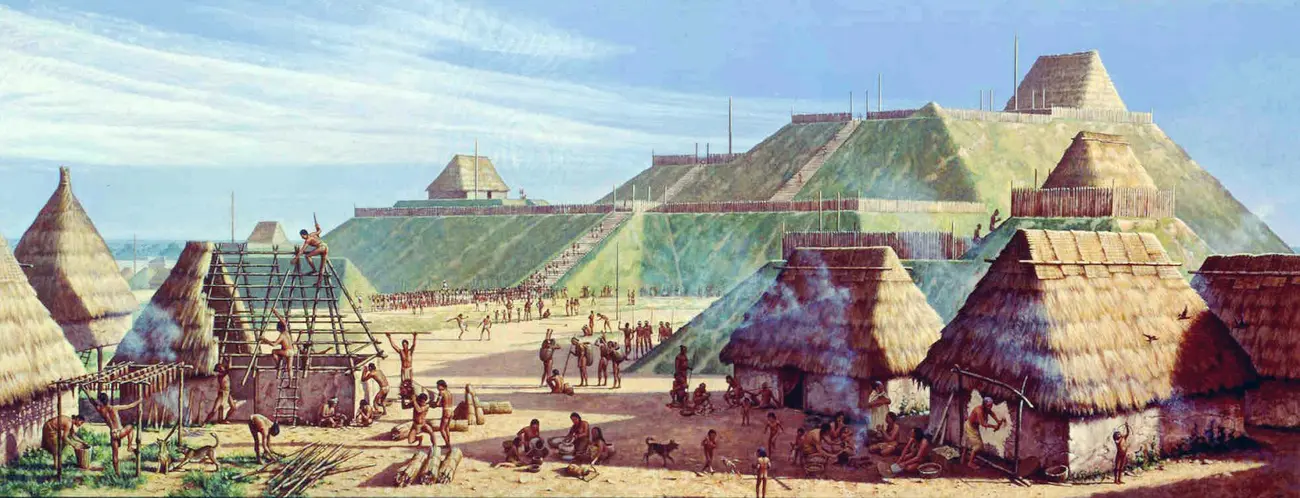About 1,000 years ago, agricultural communities were established in what would become the Southeastern and Midwestern United States, and the Mississippian culture flourished.
Keith Ashley is an archaeologist and research coordinator at the University of North Florida in Jacksonville. Ashley’s research is demonstrating a link between Native Floridians and the thriving Mississippian culture.
Ashley and his research are featured in the latest episode of the television series “Florida Frontiers,” airing this month on PBS affiliates throughout the state. The program is also available online at myfloridahistory.org.
“Mississippian World is a term that we’ve kind of superimposed as archaeologists,” says Ashley. “Basically these were Chieftain level groups, meaning that they had institutionalized inequality. They had chiefs who controlled more than one village. They were involved in intensive maize agriculture. They were involved in these far flung trade and exchange networks, and they had these large mound complexes with platform mounds that probably were the platforms for chiefly residence.”
On maps of the Mississippian World, peninsular Florida is excluded. New archaeological evidence uncovered by Ashley demonstrates that Native Americans living in Northeast Florida were part of an extensive trade network that extended to present day St. Louis.
“The Mississippian World’s delineating groups were intensive maize agriculturalists, and the groups here weren’t,” says Ashley. “But they were clearly involved in interaction networks and trade with them.”
In addition to growing maize, or corn, the Mississippian cultures were known for their construction of platform mounds, on which they would build houses, towns, temples, and burial buildings. The largest chiefdom of the Mississippian World was at a ceremonial complex at Cahokia, located near present day Collinsville, Illinois, across the Mississippi River from St. Louis, Missouri.
“Cahokia probably sprang up about 1000 AD, and then by about 1250 it’s in decline and by 1300 it’s gone,” says Ashley. “In its wake, what you see are a lot of other rival chiefdoms that sprout up. You see these chiefdoms rise and fall throughout the area. Sometimes they group together, other times they just break down, so it’s a really dynamic landscape.”
Ashley says that the St. Johns culture of Northeast Florida roughly coincides with the Mississippian World. The St. Johns Period begins about 500 AD, and continues until European contact, 1,000 years later.
“They’re fishers, collectors, hunters,” says Ashley. “The people in Northeastern Florida really gravitate to the Mississippian interaction network and become part of it. I think they have a resource that people in the landlocked areas of Alabama, Georgia, and Missouri want, and that’s shell.”
In the late 1800s and early 1900s, Clarence B. Moore documented significant archaeological sites in Florida. Moore did much of his work in the Jacksonville area, excavating the Grant Mound and the Shields Mound, where he uncovered some intriguing artifacts. Some of the artifacts were made with copper, mica, galena, and other minerals common in the Mississippian World, but not Florida.
Ashley believes that these artifacts, including a pair of copper ear decorations found by Moore at the Grant Mound, help to prove contact between Florida natives and other Native Americans who were very distant geographically.
“These small little ear pieces maybe a couple of inches in size, look like a face,” says Ashley. “They would have had a long nose pultruding from them. So far, we’ve only found seven complete pairs of those in copper in the entire United States, and all of them, we believe, are manufactured at Cahokia.”
Ashley has expanded on the information gathered by Moore, discovering distinctive pottery and other artifacts that further support the idea of Native Floridians interacting with distant neighbors to the north.
“We found a small little point called a Cahokia Point near Shields Mound,” Ashley says. “We had archaeologists from Cahokia look at it, and they told us that, yes, this is a Cahokia point, and it looked like any point that they would find at Cahokia.”
In between the St. Johns culture Indians and the Mississippian Indians, was a pocket of hunter gatherers who also had contact with Northeast Florida residents about 1,000 years ago.
Chemical analysis of distinctive pottery found near Jacksonville shows that some comes from central Georgia, while the design was also adopted by Native Floridians.

